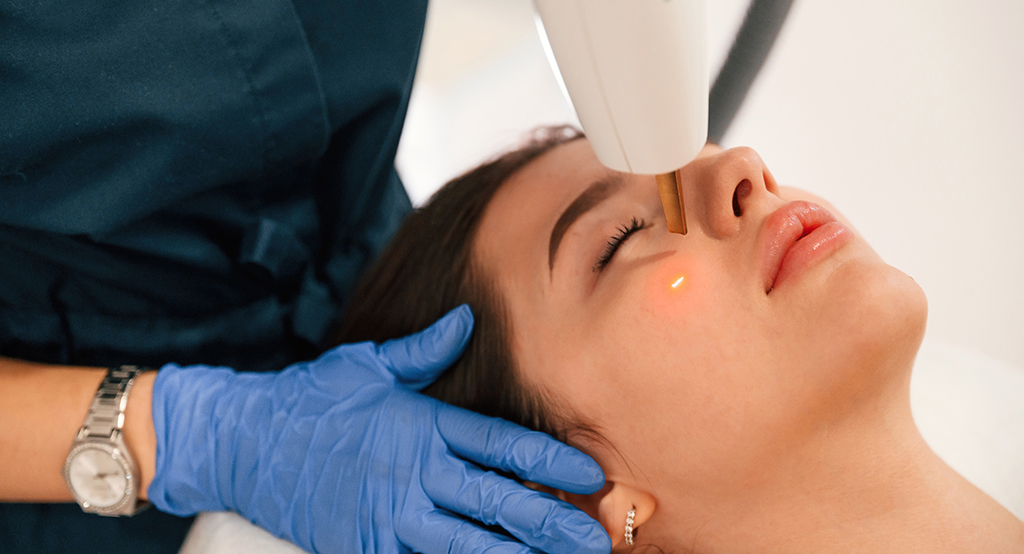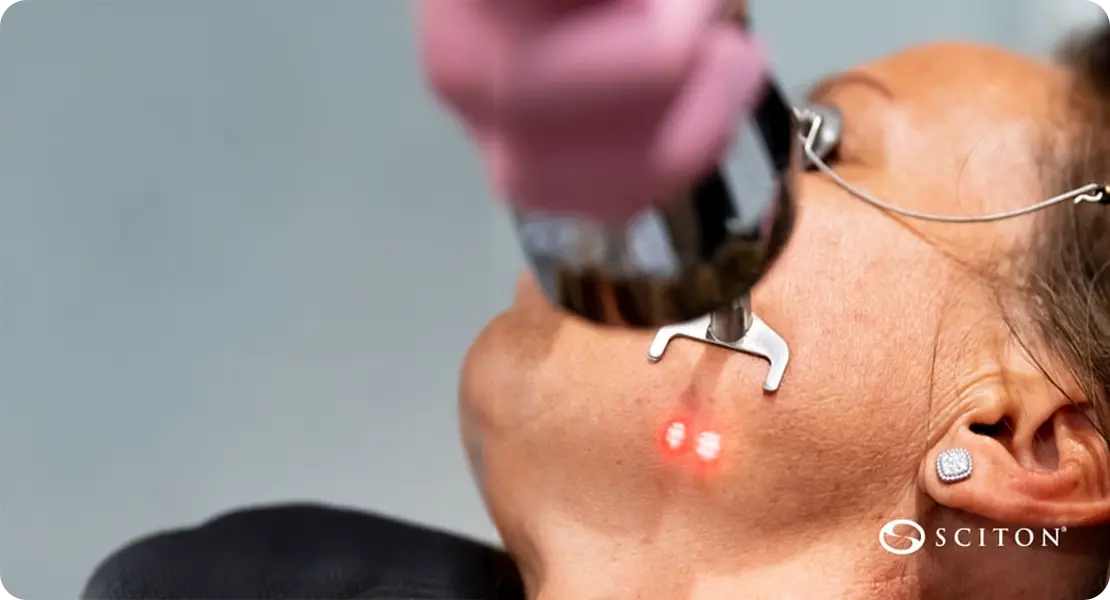If you’ve been exploring skin rejuvenation lately, you’ve probably noticed that every clinic seems to offer some “next-generation” laser or light treatment. From acne to ageing, pigmentation to tightening, the options can feel endless and confusing. It’s easy to feel overwhelmed when every treatment claims to be the latest breakthrough for flawless skin.
But not every new machine on the market is worth your time (or your wallet). Some are genuine breakthroughs, while others are mostly marketing noise. That’s why it’s important to understand which technologies are truly backed by science and which ones rely more on buzzwords than results.
So, what really works in 2026? And which treatments are safe for your skin type? The good news is that dermatology technology has advanced rapidly, offering safer, more personalised options than ever before.
Let’s cut through the hype and break down what the latest laser and light technologies actually deliver according to what experienced dermatologists are really using and recommending. This guide will help you make confident, informed choices about where to invest your time and money when it comes to your skin.
How Laser and Light Treatments Work
Both lasers and light-based devices use targeted energy to treat the skin, but they do so in slightly different ways.
- Lasers emit a single, focused wavelength of light to precisely target a specific pigment or structure (like melanin, haemoglobin, or collagen).
- Light-based devices (like IPL or LED) use multiple wavelengths to treat broader concerns such as redness or acne.
When done correctly, these treatments can improve skin tone, reduce pigmentation, stimulate collagen, and even out texture all with minimal downtime.
What’s New in 2026

Technology in dermatology evolves fast. In 2026, three major trends are shaping the future of laser and light-based care:
- Personalised laser settings based on AI-assisted skin mapping.
- Fractional hybrid lasers that combine ablative and non-ablative effects in one session.
- Multi-spectrum devices that treat multiple skin layers simultaneously.
The aim is precision, safety, and faster recovery so you get visible results without the prolonged redness or peeling that older systems caused.
Top Laser and Light Treatments That Actually Work
1. PicoSure Pro (Pico Laser 2.0)
The PicoSure Pro remains one of the most advanced lasers for pigmentation and tattoo removal in 2026. It delivers ultra-short bursts of energy (in picoseconds) that shatter pigment without overheating the surrounding skin.
Why it’s effective:
- Ideal for stubborn sunspots, melasma, and acne marks.
- Minimal downtime, suitable for most skin tones.
- Also boosts collagen for smoother texture.
If you’ve struggled with uneven tone that doesn’t respond to creams, this laser is worth discussing with your dermatologist.
2. Fraxel Dual 1550/1927 (Still a Gold Standard)
Fraxel remains a household name because it works. It uses fractional laser technology to create micro-injuries in the skin, triggering your body’s healing response and new collagen formation.
What it helps:
- Fine lines, mild scarring, and pigmentation.
- Sun damage and uneven texture.
- Long-term skin rejuvenation.
The 1927 wavelength targets surface pigmentation, while 1550 goes deeper for collagen stimulation. Downtime is around 3–5 days still one of the best trade-offs for the results you get.
3. Excel V+ (Next-Gen Vascular Laser)
If redness, rosacea, or visible veins are your main concern, Excel V+ is one of the best vascular lasers of 2026. It combines two wavelengths (532 nm and 1064 nm) to target blood vessels at different depths.
Results you can expect:
- Fades red spots and broken capillaries.
- Calms rosacea flare-ups.
- Improves overall skin clarity.
Many dermatologists in London rely on it because it’s precise, comfortable, and effective across a wide range of skin types.
4. Halo Hybrid Laser
The Halo Laser combines ablative (2940 nm) and non-ablative (1470 nm) wavelengths in one session. This means it resurfaces the skin while also tightening it giving you that “lit-from-within” glow.
Why patients love it:
- Reduces wrinkles, scars, and pigmentation.
- Customisable intensity you control the downtime.
- Promotes collagen for long-term firmness.
For those seeking noticeable rejuvenation without surgery, Halo remains a top choice in 2026.
5. Lumecca IPL (Intense Pulsed Light)
While technically not a laser, IPL remains a leading light-based treatment. The latest version, Lumecca, delivers three times the power of older IPL systems.
Best for:
- Sunspots and freckles.
- Broken capillaries and redness.
- General tone and complexion improvement.
Results are usually visible after just one or two sessions, with minimal downtime.
6. AviClear for Acne
AviClear has revolutionised acne treatment. It’s the first FDA-approved laser designed to target sebaceous glands (oil-producing glands), addressing acne at its root cause rather than the surface.
Why it stands out:
- Reduces active acne and prevents future breakouts.
- Suitable for all skin tones.
- No medication or downtime required.
If you’ve struggled with persistent breakouts or can’t tolerate oral treatments, AviClear may be the breakthrough you’ve been waiting for.
What’s Safe for Different Skin Tones

Laser safety depends heavily on your skin type, especially for darker tones (Fitzpatrick IV–VI).
In the past, some lasers risked causing burns or pigmentation changes. Thankfully, 2026 devices now come with advanced cooling systems, longer wavelengths, and AI-guided power calibration to reduce those risks.
Safe choices by skin tone:
- Fair skin: Most lasers (Fraxel, Halo, Excel V+) are suitable.
- Medium/tan skin: PicoSure Pro and Lumecca IPL (adjusted settings).
- Dark skin: Nd:YAG lasers (1064 nm) and AviClear are the safest.
Always ensure your practitioner is experienced in treating your specific tone it’s the most important safety factor.
Treatments That Are Overhyped (and What to Skip)
Let’s be honest: not every trending device lives up to its promises.
Here are a few to approach with caution:
- Home-use laser pens: Limited depth, no safety control.
- Cheap IPL gadgets: Often underpowered and can cause burns.
- Unverified “LED facials” at non-medical salons: Minimal evidence of long-term benefit.
In 2026, the difference between results and regret often comes down to where and who performs your treatment not the machine itself.
Combining Laser with Other Treatments
Many people now combine lasers with other aesthetic procedures for enhanced results.
Popular combinations include:
- Laser + Microneedling RF: Improves firmness and pore size.
- Laser + PRP (Platelet-Rich Plasma): Speeds up healing and boosts glow.
- Laser + Chemical Peels: For resurfacing and pigmentation control.
Your dermatologist can tailor these to your skin’s condition and recovery tolerance.
Expected Downtime and Aftercare
Downtime varies depending on the treatment intensity:
- Pico lasers / IPL: Mild redness for a few hours.
- Fraxel / Halo: 3–7 days of peeling or dryness.
- Ablative resurfacing: Up to 10 days.
After any laser session, follow these golden rules:
- Avoid sun exposure for at least two weeks.
- Use SPF 50+ daily, even indoors.
- Keep skin hydrated and avoid exfoliation.
- Don’t pick or peel any flaking skin.
Your provider will guide you with a personalised aftercare plan follow it closely to protect your results.
What Dermatologists Actually Recommend in 2026
When it comes to trusted technologies, here’s what most dermatologists are using this year:
- PicoSure Pro for pigmentation and acne scars.
- Excel V+ for redness and rosacea.
- Fraxel Dual for anti-ageing and texture improvement.
- AviClear for acne management.
- Halo Hybrid for all-round rejuvenation.
These devices consistently show strong clinical results and high patient satisfaction rates. They’ve been studied, peer-reviewed, and proven effective not just hyped on social media.
What’s Worth Your Money (and What Isn’t)
Invest in treatments that address your unique skin concerns rather than what’s trending.
Worth it:
- Procedures backed by studies and performed by dermatologists.
- Treatments that stimulate collagen (Fraxel, Halo, Pico).
- Devices safe for your skin type.
Not worth it:
- Generic “laser facials” without medical supervision.
- Packages with unclear device names or protocols.
- Treatments advertised as “no-downtime miracles” true collagen stimulation always takes time.
How to Choose the Right Clinic
Choosing the right clinic is as crucial as choosing the right device. Look for:
- Qualified dermatologists or laser specialists.
- Clear pre- and post-care guidance.
- Transparent treatment plans not just sales pitches.
- Modern, medically certified devices.
At a reputable clinic like London Dermatology Centre, you’ll have access to clinically validated technologies and an expert team that tailors treatments to your skin safely.
Future of Lasers: Where We’re Headed
Looking ahead, the next evolution in laser and light therapy will focus on:
- AI-guided diagnostics that automatically adjust wavelength and pulse.
- Laser-assisted drug delivery, enhancing topical treatment absorption.
- Energy combinations, like ultrasound and radiofrequency in one device.
The future is precision-based less trial and error, more data-driven results.
FAQs:
1. Are laser and light treatments safe for all skin types in 2026?
Yes but only when performed with the right technology and by qualified professionals. Older-generation lasers sometimes caused burns or pigmentation issues in darker skin tones, but newer systems in 2026 are far more precise. Devices like PicoSure Pro, Nd:YAG 1064 nm, and AviClear are specifically engineered with advanced cooling and AI-calibrated energy control to minimise risk. Dermatologists now tailor settings to your skin’s melanin level, ensuring safe, even-toned results across all Fitzpatrick types.
2. How many sessions are usually needed to see visible results?
The number of sessions depends on your concern and the device used. For instance, pigmentation or sun damage treated with PicoSure or Fraxel may need three to four sessions spaced a month apart. Acne treatments such as AviClear often show visible improvement after three sessions. Light-based treatments like Lumecca IPL can produce noticeable brightening even after one session, but maintenance every few months is recommended for lasting results.
3. Do laser and light treatments hurt?
Most modern devices are designed to be comfortable. Treatments like PicoSure and Lumecca IPL may feel like a quick rubber band snap or mild warmth on the skin, but the discomfort is short-lived. Advanced cooling systems, topical numbing creams, and precise wavelength delivery mean that most patients tolerate sessions easily. Some redness or tingling can occur afterward, but this typically settles within a few hours to a day.
4. How soon after treatment will I see results?
Results depend on the type of laser or light used. Fractional lasers like Fraxel and Halo stimulate collagen, so improvements appear gradually over weeks as new skin cells form. Pigmentation-focused lasers such as PicoSure Pro show clearer, brighter skin after the first or second session. Vascular lasers like Excel V+ offer faster results, with redness and veins fading within days. Long-term collagen stimulation continues to refine skin tone and firmness over several months.
5. Can I combine laser treatments with other aesthetic procedures?
Absolutely. Dermatologists often combine laser treatments with microneedling RF, PRP (platelet-rich plasma), or chemical peels for more comprehensive results. These combinations target multiple layers of the skin lasers for deep collagen, PRP for healing, and peels for surface renewal. However, timing and sequence are critical. Always have these procedures supervised by a dermatologist to prevent irritation or prolonged recovery.
6. Are there any side effects or risks to be aware of?
When done properly, side effects are minimal. You may experience mild redness, swelling, or peeling depending on treatment intensity. Temporary darkening of pigmentation (called post-inflammatory hyperpigmentation) can occur but usually resolves with proper aftercare. Serious complications like burns or scarring are rare when procedures are performed in a medical-grade clinic. Using sunscreen and following post-treatment advice significantly reduces any risk.
7. What aftercare should I follow post-laser treatment?
Post-laser care determines how well your skin heals and retains its glow. For the first 48 hours, avoid direct sunlight, makeup, saunas, and heavy workouts. Apply a fragrance-free moisturiser and SPF 50+ sunscreen daily. Keep the skin clean but avoid exfoliation or active ingredients like retinol for at least a week. If flaking occurs, let it shed naturally never pick or peel. Your dermatologist may recommend a soothing cream or hydrating serum to aid recovery.
8. How do I know which laser treatment is right for me?
The best approach is to start with a professional consultation. Your dermatologist will assess your skin type, condition, and medical history before recommending a suitable device. For instance, Fraxel Dual is ideal for texture and ageing, PicoSure Pro for pigmentation, Excel V+ for redness, and AviClear for acne. Personalised laser mapping in 2026 allows practitioners to tailor wavelengths and intensities precisely, ensuring optimal results without unnecessary irritation.
9. How long do laser results last?
Longevity varies, but most patients enjoy results lasting six months to two years, depending on their lifestyle and skincare routine. Collagen-boosting treatments like Fraxel and Halo provide long-term benefits as the skin continues to remodel. However, factors like sun exposure, smoking, and inadequate aftercare can shorten results. Many dermatologists recommend maintenance sessions every 6–12 months to keep the skin firm, clear, and radiant.
10. Are home-use laser or light devices worth buying?
Home-use devices might seem convenient, but they lack the power and precision of clinical-grade lasers. Most are too weak to produce visible results and can even cause burns if misused. Unlike professional systems that use controlled wavelengths and cooling, at-home gadgets often operate at inconsistent intensities. For safety and effectiveness, it’s best to invest in treatments performed under medical supervision where parameters are customised for your skin type and concern.
Final Thought: Expert Guidance for Your Skin
Laser and light treatments in 2026 have come a long way from the days of trial and error. With AI-assisted precision, hybrid wavelengths, and improved cooling systems, these technologies are now safer and more effective than ever even for sensitive or darker skin tones. Still, the best results don’t come from the latest device alone but from the expertise behind it.
If you’re considering any form of laser or light therapy, it’s essential to seek professional advice first. A qualified dermatologist can assess your skin type, goals, and medical history to recommend a treatment plan that’s both safe and effective. You can book a consultation with one of our dermatologists by contacting us at the London Dermatology Centre, where every treatment is tailored to your skin’s unique needs.
References:
1. Alkhalifah, A. & Alsanosi, A. (2023) ‘Review of Lasers and Energy-Based Devices for Skin Rejuvenation: Mechanisms, Efficacy and Safety’, Journal of Cosmetic Dermatology, 22(9), pp. 3031–3042. Available at: https://pubmed.ncbi.nlm.nih.gov/35165220/
2. He, X., Zhou, Y., Huang, X. et al. (2024) ‘Low-Level Laser Therapy for Skin Rejuvenation: A Safe and Effective Therapeutic Option’, Journal of Cosmetic Dermatology, 23(2), pp. 358-368. Available at: https://pubmed.ncbi.nlm.nih.gov/38817003/
3. Vergnano, A. & Proto, V. (2018) ‘An Overview of Laser in Dermatology: The Past, the Present and the Future’, Journal of Skin Laser Treatment, 6(1), pp. 12-21. Available at: https://www.ncbi.nlm.nih.gov/pmc/articles/PMC5535675/
4. Lee, J. & Kim, H. (2022) ‘To Evaluate the Efficacy and Safety of Laser Interventions for Facial Acne Scars: A Systematic Review and Network Meta-analysis’, Annals of Translational Medicine, 10(24):1396. Available at: https://www.ncbi.nlm.nih.gov/pmc/articles/PMC9843402/
5. Hernández-Bule, M.L., et al. (2024) ‘Unlocking the power of light on the skin: mechanisms and clinical evidence for laser and light-based therapies’, International Journal of Molecular Sciences, 25(8), 4483. Available at: https://www.mdpi.com/1422-0067/25/8/4483
